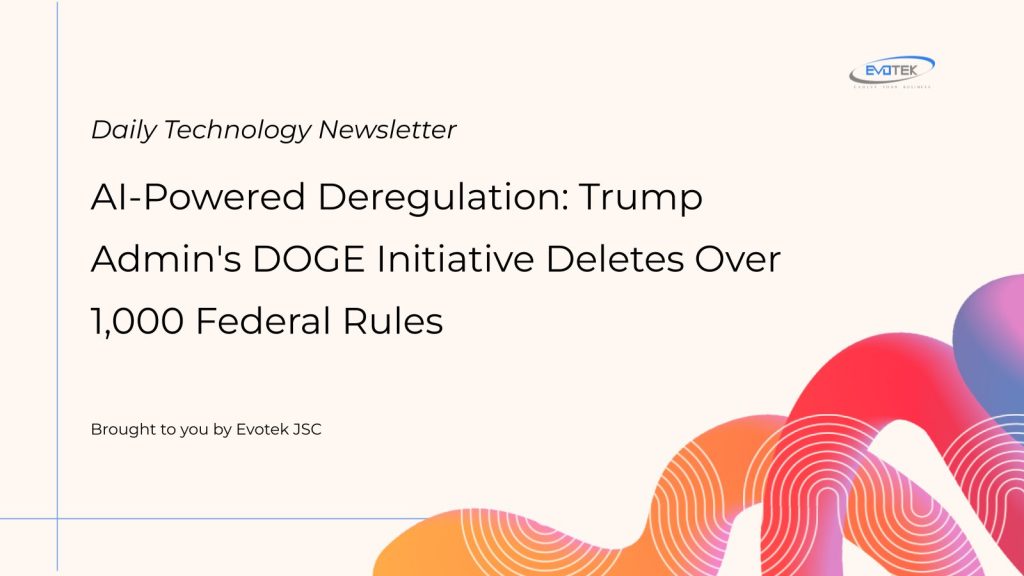The Department of Government Efficiency (DOGE) has embarked on an ambitious drive to significantly cut down federal regulations, utilizing an advanced artificial intelligence tool. This initiative has already led to the removal of over a thousand federal rules, with projections aiming for a much larger impact.
“DOGE AI Deregulation Decision Tool” at Work
Dubbed the “DOGE AI Deregulation Decision Tool,” this innovative system operates with minimal human oversight. Its primary function is to identify federal regulations that are not explicitly mandated by law. Once identified, the AI drafts the necessary submissions for their official removal, streamlining a process traditionally demanding extensive human resources.
A confidential PowerPoint presentation, obtained by The Washington Post, highlights the tool’s early successes. It proudly notes that 1,083 regulations have already been stripped away from the Department of Housing and Urban Development (HUD), serving as a significant “case study” for the AI’s capabilities.
Vast Scope and Projected Savings
Dated July 1, the presentation estimates that approximately 100,000 federal regulations are prime candidates for removal. This large-scale deregulation effort is anticipated to yield substantial financial benefits, potentially saving the U.S. government “trillions in compliance costs and budget reductions.”
Furthermore, the document asserts that leveraging AI for regulatory review will drastically reduce the human effort involved, claiming a 93 percent reduction in man-hours required for the deregulation process. However, the methodology behind this precise figure remains unspecified.
Legal Scrutiny and Internal Challenges
The legality of the Trump administration unilaterally repealing such a vast number of federal regulations faces scrutiny. Yet, the DOGE presentation assures that the AI tool has been “vetted and endorsed by DOGE lawyers,” suggesting a prepared stance against potential legal challenges.
Despite the official claims of efficiency, the implementation has not been without its hitches. A spokesperson for HUD, while declining to disclose specific numbers on regulations being examined, emphasized that the AI’s role is “not to replace the judgement, discretion and expertise of staff but be additive to the process.”
However, unnamed HUD employees have shared concerns. One staffer revealed to the Post that the AI tool made “several errors” during its assessment. “There were a couple places where the AI said the language was outside of the statute,” the person stated, “and actually, no—the AI read the language wrong, and it is actually correct.”
Elon Musk’s Past Involvement and DOGE’s Evolution
The development of this cutting-edge AI tool traces back to engineers brought into the government by Elon Musk, who founded DOGE. Musk, however, departed from his role at the cost-cutting initiative in late May, following a reported strained relationship with President Donald Trump.
Since Musk’s departure, DOGE’s public profile and influence have reportedly waned. Nevertheless, the core mission of streamlining federal bureaucracy through technological means, including the controversial AI deregulation tool, continues to press forward.

 日本語
日本語 한국어
한국어 Tiếng Việt
Tiếng Việt 简体中文
简体中文